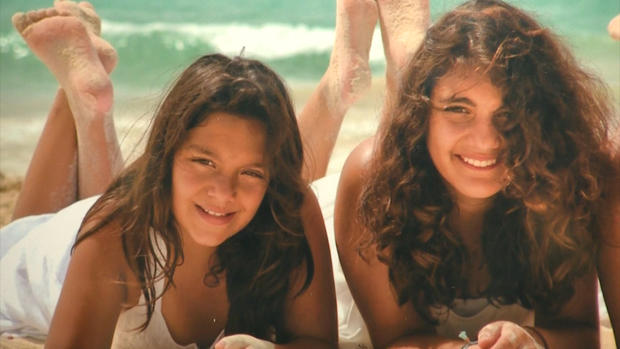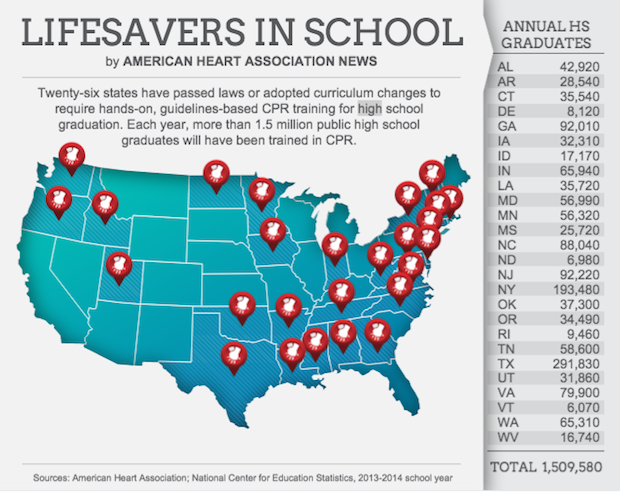Half of U.S. high school students will learn life-saving CPR
Two years ago, when she was 8 years old, Gracie Singh suffered a seizure while taking a bath. Her mom didn't know CPR but her big sister, Chloe, did. The teen had learned CPR at school just two months earlier.
"My dad called 911 while I was pushing through my mom and I started just to do some CPR," Chloe told CBS News. Within a few minutes, Gracie was breathing again.
Chloe says she thinks everyone should learn rescue CPR. "If something like that happened to one of them or one of their family members they should know what to do," she said.
More than half of U.S. states will now require students to pass CPR training before graduation, with New York becoming the latest to add it to the curriculum this fall. That means a trained army of more than 1.5 million students nationwide each year who will know what to do to help someone having sudden cardiac arrest, one of the most common cause of death in the U.S.
The action follows several years of campaigning by the American Heart Association and parents' groups who say the training is the surest way to increase the number of people who can help save someone having a heart attack in the critical first few minutes.
"CPR training is a formative life skill and we are encouraged that New York and 25 other states share our position. But there is more work to be done," said Nancy Brown, CEO of the American Heart Association. "We are steadfast in our commitment to creating a culture in which CPR training is just as fundamental to our educational system as geometry and history."
The CPR training includes an instructional video and specially designed mannequins for hands-on practice. It is usually taught over a 30-minute session, in groups of 10 or 20 students, during physical education or gym class.
Health instructor Miesha Thompson, who teaches at a Washington D.C. high school, says the training not only teaches the students the proper technique to perform CPR, it also gives them a sense of how challenging it can be in real life.
"They learned if they didn't have the right hand position that they had to readjust where their hand was," she told CBS News. "They noticed how tiring it can be, which it can be, if you are actually doing CPR on somebody."
More than 326,000 people experience sudden cardiac outside of hospitals each year and nine out of ten will not survive, according to the American Heart Association. But if a bystander administers CPR, the chances of survival can double or triple.
CPR in the first three minutes after cardiac arrest, even with hands only, greatly improves survival odds by limiting oxygen deprivation and blood loss to the brain.
Currently, bystanders administer CPR to cardiac arrest victims about one-third of the time. The school-required training could add about 1.5 million students per year who are trained to help, hopefully increasing those odds.
States that have mandatory school CPR training include: Alabama, Arkansas, Connecticut, Delaware, Iowa, Idaho, Indiana, Georgia, Louisiana, Maryland,Mississippi, Minnesota, North Carolina, North Dakota, New Jersey, New York, Oklahoma, Oregon, Rhode Island, Texas, Tennessee, Utah, Virginia, Vermont, Washington and West Virginia.

